Theoretical and methodological issues. Рубрика в журнале - Economic and Social Changes: Facts, Trends, Forecast
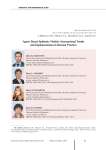
Agent-based epidemic models: International trends and implementation in Russian practice
Статья научная
The article presents an analysis of developments in the modeling of epidemiological processes, primarily conducted using a modern mapping the scientific research landscape. The authors identify the world's leading research centers and groups that have been actively working in this field in recent years, as well as the key approaches used in modeling epidemiological processes that have been tested in practice and proven their adequacy. It is noted that alongside classical compartmental models, which describe epidemiological dynamics as the transition of a population segment from one category (associated with a specific stage of an infectious disease) to another, agent-based models are becoming increasingly widespread. These models simulate the processes of person-to-person infection transmission. The advantages of the agent-based approach include the ability to reproduce population heterogeneity within an artificial society, which significantly influences infection spread processes, and to simulate direct and feedback loops between various processes, including the agents' capacity to adapt their behavior based on the current epidemiological situation. The paper presents the concept of an agent-based epidemiological model for Russia, designed for testing and evaluating the effectiveness of planned anti-epidemic measures. The concept involves simulating the spread of an epidemic through agent interactions: the population of agents replicates the real socio-demographic structure of the population, accounting for all individual characteristics that influence people’s involvement in infection spread, including their social connections, spatial distribution, and regional specifics; the progression of each agent through all stages of the disease is simulated according to the features of the infectious disease causing the epidemic; a realistic picture of population movement across Russia's transport infrastructure is reproduced, represented as a graph where vertices are transport hubs and edges are the connecting routes
Бесплатно
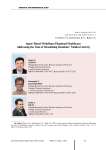
Статья научная
The article addresses the task concerning the development of techniques for formalizing the behavior of agents-users of medical services in agent-based models designed to support decision-making on the spatial layout of health infrastructure facilities in the region. We analyze approaches to determining the behavior patterns of consumers of medical services and, on this basis, develop the structure of agents' behavior model. We consider the implementation of the proposed model with the help of fuzzy neural networks. While forming the network, we use the results of a sociological survey conducted by Vologda Research Center in the territory of the Vologda Oblast in 2020. Practical implementation of the network is carried out in the Microsoft Access environment. Using this tool, we conduct a number of experiments to determine residents' medical activity based on the initial data of the sociological survey. We use general scientific methods of formalization, abstraction, generalization, methods of system analysis, mathematical statistics, and fuzzy logic. The results of our work consist in designing the structure of behavior model for agents-consumers of medical services and methods for its implementation. Scientific novelty of our findings consists in the proposed structure of behavior model of agents-consumers of medical services and its practical implementation with the use of fuzzy neural networks in relation to the manifestation of medical activity. Practical significance of the results lies in the fact that the instrumental approaches proposed and partially tested in it will allow us to develop agent-based models of regional healthcare adequate to objective environmental conditions, taking into account citizens' attitudes and behavior motives in interaction with medical services. In the future, this will help us to put forward and adjust measures to improve the efficiency of spatial layout and functioning of networks. Further work will be related to the improvement of the proposed methods in the following areas: determining ways to train the developed fuzzy neural network and finding ways to implement the remaining elements of the developed model for agent behavior.
Бесплатно

Assessing the level of social development in Russia’s regions: methodological and applied aspects
Статья научная
Modern research works contain a large number of different approaches to assessing the level of socio-economic development of territories; as for the techniques that assess economic development of territories, they are not so numerous; and the techniques for assessing social development of territories are encountered even less often. We put forward our own approach to assessing the level of social development in Russia’s regions and consider population (consumer of social services) and the social sphere (subsystem of services provision) as the object of managing social development of the territory. The article proposes a technique for assessing the level of development of the territorial socio-economic system using Amartya Sen’s modified social welfare function, taking into account adjustments for the characteristics of management object components: quality of life, social infrastructure and social services. We determine adjustment factors and carry out the testing on the data for 2014-2021 in the context of Russia’s constituent entities; we form a rating of regions according to the level and specifics of social development and identify four groups of regions: “social development leaders”, “socially developing”, “socially slowing down” and “socially undeveloped” regions.
Бесплатно
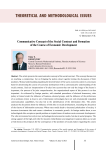
Communicative concept of the social contract and formation of the course of economic development
Статья научная
The article presents the communicative concept of the social contract. This concept focuses not on reaching a compromise, but on bringing the parties closer together during the discussion of their positions. Mutual understanding regarding the desired future of the socio-economic system is a necessary basis for determining the course of economic development with a communicative understanding of the social contract. Such an interpretation of it takes into account that not only the image of the future is important, the process of its joint comprehension, the organizational aspect of this process is no less important. As evidenced by foreign practice, with standard procedures of electoral democracy, state policy is formed under the influence of business-oriented groups, and the influence of the preferences of an ordinary citizen is close to zero. Information technologies have not only dramatically expanded communication capabilities, but also led to the identification of the information elite. The article analyzes the discussion about the influence of this elite on social development, including the discussion of the theory of information autocracy. When mass media leads to increased polarization of society, it increases investment risks and causes a slowdown in economic growth. As foreign studies show, a new technological elite occupies a special position on topical issues of modern socio-economic development. The elite is interested not only in new technological and economic results, but also in social progress. The strong support of the high-tech elite for income redistribution and progressive taxation allows us to take a fresh look at the prospects for the convergence of the positions of social clusters regarding the course of economic development. The communicative concept of the social contract is a suitable basis for the synthesis of ideas of social clusterism and collaborative democracy.
Бесплатно
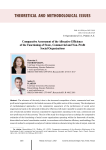
Статья научная
The relevance of the study is due to the increased competition of state, commercial and non-profit social organizations for the limited resources of the public sector of the economy. The development of methodological approaches to the comparative assessment of the performance of social sector organizations based on the principle of allocative efficiency will make it possible to analyze the output per unit of material and labor resources expended for organizations operating in the state, commercial and non-profit sectors of the economy. The aim of the study is to design and test a technique for comparative evaluation of the functioning of social sector organizations operating within the framework of market, hierarchical and social coordination models, in accordance with allocative efficiency methodology. Our research method is comparative analysis of relative indicators characterizing the ratio of output, material and labor costs of social organizations. The information base of the study includes data from the national accounts of Russia for the period from 2016 to 2022. The results obtained show that the predominant allocative efficiency of using direct costs is typical for organizations operating within a hierarchical coordination model, which is associated with the regulatory and distributive nature of resource attraction and expenditure, the presence of external control tools over resource expenditure, and the presence of a significant methodological base in the field of standardization of activities. The predominant allocative efficiency of using labor costs is observed in organizations operating within the framework of a market coordination model, due to the use of labor planning methods and remuneration systems that focus the staff on achieving the results. The use of the results obtained in determining the allocative efficiency of social sector organizations operating within the framework of market, hierarchical and social coordination models makes it possible to scientifically substantiate decisions on the allocation of limited social sector resources from the perspective of optimization
Бесплатно
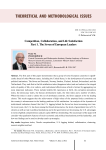
Competition, collaboration, and life satisfaction. Part 1. The seven of European leaders
Статья научная
The first part of this paper demonstrates that a group of seven European countries is significantly ahead of other Western states, including the United States, in the development of economic and political institutions. The Seven are Denmark, Norway, Sweden, Finland, Iceland, Switzerland, and the Netherlands. They rank first in the life satisfaction index (happiness index) and are leaders in the integral index of quality of life, civic culture, and institutional effectiveness which is formed by aggregating ten most important indicators. These include healthy life expectancy at birth, the corruption perception index, the democracy index, the human development index, the Gini index and a number of others. When this index is used to cluster the set of developed countries, the Seven appears to be the leading cluster. This result suggests that the achievement of high values of the proposed index contributes to the country’s advancement to the leading positions in life satisfaction. An analysis of the dynamics of institutional indicators showed that the U.S. lagging behind the Seven has been increasing over time. In recent years, the U.S. has been among the flawed democracies, the levels of generalized trust of U.S. citizens as well as trust in political institutions and in the government are decreasing, the U.S. advantages in terms of global competitiveness and per capita GDP are diminishing. The second part of the paper will consider what qualitative features of socio-economic and political mechanisms provide leadership, and how our findings can be used to develop catch-up strategies.
Бесплатно
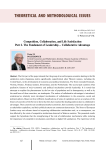
Статья научная
The first part of the paper showed that the group of seven European countries leading in the life satisfaction index (happiness index) significantly outperformed other Western nations, including the United States, in the development of economic and political institutions. The Seven includes Denmark, Norway, Sweden, Finland, Iceland, Switzerland, and the Netherlands. The second part examines what qualitative features of socio-economic and political mechanisms provide leadership. It is noted that attempts to explain this phenomenon by the low size of population and its homogeneity, as well as by the small area of these countries, are inadequate. The notion of collaborative advantages is introduced, understood as relatively more developed mechanisms of collaboration in the economic, social and political spheres. Based on three different classifications of types of capitalism and on an analysis of the history of countries of the Seven we show that they have reached the leading positions due to collaborative advantages. These countries are coordinated market economies, their economic systems are characterized as stakeholder capitalism, and their political systems are consensus democracies. The Seven of European Leaders carry out reforms aimed at improving collaboration mechanisms and, as a consequence, are less affected by the crisis of competitive institutions observed in Western societies. The presented results support the hypothesis that the strengthening of the role of collaboration mechanisms while reducing the importance of competitive mechanisms contributes to higher life satisfaction. The experience of the Seven is used by other developed European countries as well. The question of how our findings can be used in choosing a catching-up strategy is discussed.
Бесплатно
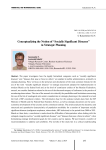
Conceptualizing the notion of “socially significant diseases” in strategic planning
Статья научная
The paper investigates how the legally formalized categories such as “socially significant diseases” and “diseases that pose a threat to others” are applied in public administration, primarily in strategic planning. First, we focus on the presence and description of the most common formats for the use of the term “socially significant diseases” in strategic documents adopted for implementation in modern Russia at the federal level and at the level of constituent entities of the Russian Federation; second, we consider limitations related to the use of the discussed category of indicators in the practice of monitoring observations. The aim of the research is to identify the possibilities and limitations concerning the use of the list of nosological units under consideration in strategic planning at the national level and the level of RF constituent entities. The information base for the analysis includes data from the RF Ministry of Health and the Federal State Statistics Service, as well as strategic documents on the socioeconomic development of the country and its constituent entities. The article analyzes the dynamics and structural and quantitative characteristics of population morbidity for a number of important socially significant diseases (malignant neoplasms, tuberculosis, HIV infection) in the period from 2000 to 2021. Based on these data, a conclusion is made about the difficulties of interpretation when dealing with the enlarged categories such as “socially significant diseases” and “diseases that pose a threat to others” when formulating strategic development goals for the country and its regions. We put forward a number of recommendations to address such problems. The novelty of the study lies in a critical understanding of the possibilities and limitations related to the use of the terms “socially significant diseases” and “diseases that pose a threat to others” in program documents due to the fact that their list is significantly heterogenous and includes fundamentally different nosological units. Practical significance of the work consists in clarifying the practices of using the discussed category of indicators as the indicators of regional development.
Бесплатно
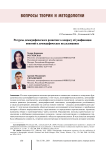
Demographic development resources: on the unification of concepts in demographic research
Статья научная
The article attempts to distinguish a variety of related and consonant fundamental demographic terms, including: demographic development, demographic policy, demographic development (policy) tools, demographic development (policy) mechanism, demographic potential, demographic resilience. We also focus on the synthesis of a new concept - demographic development resources. To this end, we make an overview of current demographic research by Russian and foreign authors, consider their definitions of the above terms, and identify common and contradictory features of the concepts. We make an attempt to critically comprehend and generalize disparate approaches in order to systematize and unify the terminological framework of demographic research. During the analysis, we discover an entity that is invisibly present in the terminological framework of demographic development and demographic policy, but is not clearly defined. In order to introduce the appropriate term, we compare the interpretations ofthe terms “source”, “resource” and “potential”. As a result, we choose “demographic development resource” as the most accurate term for this phenomenon. Having systematized disparate approaches and clarified the meaning of individual components, we propose a definition for the term “demographic development resource” - it is a set of available tangible and intangible assets that can be used to manage demographic and migration processes. The identified concept, its term and the definition we propose should form the basis for research in a new scientific direction. In the future, it is necessary to typologize demographic development resources, identify and calculate their amount in Russia, assess their sufficiency, find the tools to influence individual resources, investigate the necessary and sufficient amounts of resources, as well as design a mechanism for achieving and maintaining their required amount, using the example of Russia.
Бесплатно
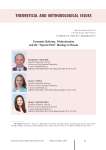
Economic reforms, modernization and the “special path” ideology in Russia
Статья научная
The article explores the “special path” ideology as a significant factor in Russia's economic modernization and development in the constructive context. The concept of the special path is considered within the perspective of the evolution of economics, emphasizing its differences from radical denial of universal laws. The special path is presented as a strategy for adapting institutions and policies to unique national and historical conditions, closely related to sovereignty and national interests. Research methods are based on the use of bidirectional LSTM neural networks for classifying texts of scientific articles by their ideological color and analyzing representation of bigrams in publications categorized as "special path" with the Lekta software product. The authors substantiate four main characteristics of the special path: economic sovereignty, historicism, adaptability and pragmatism. The special path is not considered to be a denial of universal laws, but rather as a way to adapt the institutional structure to national particularities. The study emphasizes the importance of considering historical context and practical experience when shaping economic policy, while criticizing attempts to mechanically adopt foreign models without consideration of national specifics. The “special path” ideology does not reject the achievements of science or the experience of reforms in other countries, but instead emphasizes the need to adapt them to the specific circumstances of Russia, including historical, institutional, and geopolitical factors. The synergy of sovereignty, historicism, flexibility, and pragmatism is seen as the foundation for developing a strategy for modernization that can ensure sustainable development in an uncertain world. China’s success in implementing this approach demonstrates its feasibility
Бесплатно
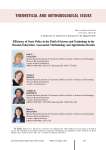
Статья научная
The article presents a methodology for evaluating the efficiency of measures and tools of state policy in the field of science and technology. The approach was developed and tested in order to improve the mechanism for monitoring the achievement of strategic goals of Russia’s scientific and technological development discussed at the meeting of the Presidential Council for Science and Education on February 8, 2023. The implementation of this direction is of great importance for ensuring technological sovereignty of the country. In the course of the research we used general scientific methods: analysis, synthesis and generalization, observation, comparison, measurement, grouping. Statistical methods such as correspondence analysis and cluster analysis were also used to implement the main task. The assessment was carried out in three directions: effectiveness assessment, assessment of the growth rate of targets, and assessment of the relevance of measures and tools of state policy in the field of science and technology by the scientific community. Based on these criteria, a set of data and a conclusion on the efficiency of public policy tools and measures were formed. The results obtained indicate the average efficiency of the tools and measures of state policy in terms of their effectiveness and relevance. The growth rates of most indicators are characterized by negative dynamics. This is primarily due to the fact that during the second stage of the implementation of the scientific and technological development strategy, restrictions caused by coronavirus infection were introduced, and we should also point out an increase in sanctions pressure.
Бесплатно
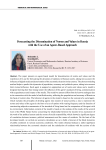
Forecasting the dissemination of norms and values in Russia with the use of an agent-based approach
Статья научная
The paper presents an agent-based model for dissemination of norms and values and the experience of its use for forecasting the dynamics of opinions in Russian society, taking into account the influence of digital media and deterioration of the economic situation in the country. The chosen modeling method helps to predict the dynamics of population, economy and political system, taking into account their mutual influence. Each agent is assigned an appropriate set of norms and values and a model is designed showing how they change under the influence of the agent’s standard of living, communication with acquaintances and impact of the media. The model we present differs from its known analogues due to its connection with the model of artificial society, reflecting the population and economy of Russia on the basis of current data. The behavior of agents in the model is based on the concept of a social agent, which includes the principles of dividing agents into clusters of social activity, a way to represent the norms and values of the agent in the form of a set of options with varying frequency and the function of constructing subjective assessments of the standard of living based on the comparison of the agent with its environment. Information content of the model is based on the analysis of the results of the seventh wave of the World Values Survey concerning the relationship between the income level, assessment of the work of the political system and the norms of social responsibility, which showed a significant degree of correlation between incomes, political assessments and the norms of residents. On the basis of the developed model, we carried out scenario calculations so as to build a forecast of the likely dynamics of public sentiment in various economic conditions. The results obtained indicate a rather significant relationship between the economic situation and the satisfaction of residents with the actions of the government. In the developed model, the change in a person’s beliefs is limited to their inner world; therefore, implementing new aspirations in attempts to change one’s own life or society is an important direction for future research.
Бесплатно
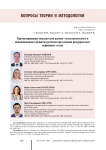
Статья научная
The article forecasts indicators of scientific, technological and innovative development of a constituent entity of the Russian Federation and regional institutions of innovative development using recurrent neural networks. Forecasting using neural networks has become widespread and is a relevant, high-quality and reliable way of making economic forecasts and is applicable within the framework of socio-economic analysis, including analysis ofterritories. However, when studying the scientific literature, it was not possible to find works in which the scientific, technological and innovative development of regions was predicted using the neural network method, which determines the scientific novelty of the research being carried out. The relevance of the study is due to the increasing attention on the part of regional authorities to the scientific, technological and innovative development of territories and the need to form state programs of the constituent entities of the Russian Federation in the field of scientific and technological development. The research hypothesis is that forecasting indicators of scientific, technological and innovative development of the region and the activities of regional institutions for innovative development using recurrent neural networks will give more accurate results than using the linear regression method, moving average model or the Holt - Winters method. As part of the study, a recurrent neural network model was formed based on a system ofinterconnection ofindicators ofscientific, technological and innovative development of a constituent entity of the Russian Federation and regional institutions of innovative development. As a result, a forecast of indicators of scientific, technological and innovative development of a constituent entity of the Russian Federation and the activities of regional institutions for innovative development was obtained, which correlates with the real situation in this area.
Бесплатно
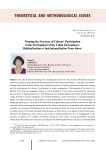
Статья научная
The article presents findings of a sociological research on the process of formation of social practices of citizens’ participation in the development of the urban environment. Creating a new, peoplefriendly urban space involves taking into account the interests of various population groups and working out the mechanisms for citizens’ involvement in urban management. The purpose of the work is to identify main ways for engaging citizens in the development of the urban environment by analyzing the processes of institutionalization. The theoretical and methodological basis of the research includes works devoted to social institutions and institutionalization, social movements as institutionalization agents, the right of citizens to participate in urban development, and the issues of civic participation in designing urban spaces. The analysis has identified main participants (actors) whose interests are affected when the issue concerning the development of the urban environment is formulated and addressed. We consider two processes of formation of the rules according to which the actors perform their functions in public arenas: from below through habitualization or from above as an import of social institutions. We show the differences in the process and results of institutionalization of civic engagement in the presence or absence of a conflict of interests among the main actors: society, government, business community. We compare the processes according to the following parameters: the nature of institutional changes, relations and actions, type of institutional changes, structure of political opportunities, and civic engagement levels. We draw conclusions about how the orientation of the processes affects the nature of civic participation. In particular, the loss of the “partnership” and “delegation of authority” stages in the process of institutionalization from above indicates a formal and imitative nature of the practices of civic participation in urban development. The novelty of the work consists in comparing the oppositely directed processes of institutionalization of civic participation (from below and from above) on the example of a specific sphere such as urban development.
Бесплатно
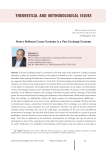
From a Robinson Crusoe economy to a pure exchange economy
Статья научная
The pure exchange model is considered as the first stage of the analysis of a simple exchange economy; at that, the research is based on the patterns of behavior of the “economic man” that were identified while studying the Robinson Crusoe model. The interpretation at this stage of production as an exogenous factor helps to determine in “pure form” the forces leading to the formation of exchange relations, to introduce into analysis and to reveal basic features of the main phenomena and processes in the sphere of circulation. Proceeding from well-known approaches to the impact of redistribution of the initial bundle of goods on the individual well-being of members of society, we pay considerable attention to the difference between the exchange of bundles of goods and the exchange of individual goods, the two possible forms of exchange that implement such redistribution. While studying the market form of exchange, we additionally analyze the known options for achieving general equilibrium - on the basis of equilibrium and a series of non-equilibrium proportions of exchange. We show that due to institutional reasons, competition between the participants of the exchange, as a tool for reducing transaction costs, cannot eliminate the costs completely; therefore, the path of moving toward the contract surface inevitably turns out to be multi-stage, accompanied by the use of non-equilibrium proportions of exchange. But the final (limit) point on this path will necessarily be a point of general equilibrium, and the number of such points that can be reached from the initial position is infinitely large. The latter is explained by the multitude of proportions of exchange that can be used by its participants at each of the nodal points of the path. The paper develops our viewpoint formulated in an earlier publication: the possibility of introducing credit relations into the analysis at this stage is associated with the existence of consumer goods of long-term use. At the same time, only the goods of long-term use can serve as the object of the credit and it is impossible to single out an "interest rate component" in the supplies that ensure the repayment of the credit.
Бесплатно
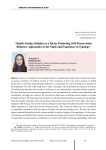
Статья научная
Under the conditions of conceptual transition of public health policy from considering citizens as passive consumers of medical services to their awareness of their own active position in health preservation, it becomes fundamentally important to understand the types of health care attitudes of the population. The aim of the study was to make a typology of the population according to the nature of health-saving attitudes and to study its influence on the dissemination of healthy lifestyle practices. We have analyzed and summarized approaches to the interpretation of health-saving motivation and classification of health care motives. We reviewed the experience of applying cluster analysis in studies of health behavior. We found that most of them use self-preservation practices as indicators for typology, while the equally important value-motivational component is most often left out of sight. Our study is designed to fill this gap. The results of the sociological monitoring of the physical health of the Vologda Oblast population in 2020 served as the information base. The motives of health care were considered in inseparable interrelation with the degree of health care and responsibility for it. We used the cluster analysis method (hierarchical and k-means method) to make a typology of the population. In the course of clustering we identified three groups of population according to the nature of health saving attitudes: 1) responsible, but unmotivated, caring little or no concern for health, 2) sharing responsibility, motivated and caring for health, 3) responsible, motivated and caring for health. We defined a socio-demographic portrait of representatives of each cluster. Representatives of the third cluster lead the healthiest way of life, while more than half of the respondents of the first cluster do not take any measures in relation to health. The results of the study have an explicit practical value in terms of managing self-preservation behavior.
Бесплатно
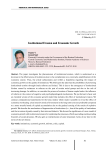
Institutional erosion and economic growth
Статья научная
The paper investigates the phenomenon of institutional erosion, which is understood as a decrease in the effectiveness of institutions due to the complication (or, conversely, simplification) of the economic system. Thus, the article substantiates and verifies a hypothesis regarding the impact of economic growth on the quality of institutions. We dwell upon the idea that the possibilities of preventing institutional erosion through timely reforms are limited. This is due to the emergence of institutional friction caused by resistance to reforms on the part of certain social groups and due to the rule of increasing damage. In addition, we consider the process of erosion of human capital under the influence of reforms in the context of cognitive and psychophysiological mechanisms. We put forward a basic and an extended version of the economic growth model that includes the effect of institutional erosion. We conduct computational experiments for the basic model, which made it possible to reveal the effect of economic overheating: a less intensive mode of investment in the long term turns out preferable compared to a more stressful mode of capital accumulation due to the gradual zeroing of the results of explosive growth. We describe the mechanism of degeneration of institutions (i.e., loss of the quality of institutions and the inversion of goals) caused by their internal dialectic. We discuss the significance of a new model of economic growth with institutional erosion for explaining the processes of both ascending and descending branches of social dynamics. We also give an interpretation of some important events of our time in the terms of the new theory.
Бесплатно
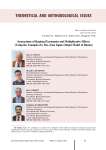
Статья научная
Currently, the key areas of Siberian economics include analyzing the economy and assessing the prospects of the Asian part of Russia. To achieve the goal, it is necessary to determine the contribution of the Asian part of Russia to the economy of other regions and the country as a whole. The aim of this work is to study the interaction of Russia's European and Asian parts. The input-output tables built in the Institute of Economics and Industrial Engineering, Siberian Branch of the Russian Academy of Sciences for the European and Asian economic zones as of 2019 allow us to assess the effects of regional interaction at the industry level using multiplicative analysis tools. The paper presents calculated regional and interregional coefficients of direct and total costs, as well as balance sheets reflecting the creation and use of products for European and Asian regions. The results of the study indicate that in the structure of direct costs of the European part of Russia, the weight of the Asian part is significant for the production of coke and petroleum products (about 44%), ferrous and non-ferrous metallurgy (about 15%) and other industries. In the structure of the total costs of the European part of Russia, a high proportion of the Asian part is observed for extractive industries, ferrous and non-ferrous metallurgy and oil refining industry, which is partly due to the specifics of recording the results of foreign trade. If we consider the balance of use of products from the Asian part of Russia, we see that 7.5% of the produced product goes to intermediate consumption and 3.0% is sent to meet the final demand of European regions. The results of the work can be used to measure the effects of public financing at the regional and federal levels. Due to the fact that indirect and full costs account for only those product flows that relate to intermediate consumption, it seems advisable in the future to elaborate on the methodology so as to include accounting for investment goods.
Бесплатно
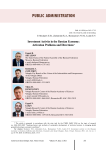
Investment activity in the Russian economy: activation problems and directions
Статья научная
The big challenges facing Russia require ensuring high-quality economic growth which makes it necessary to search for investment resources. However, financial crises, foreign policy pressure, coupled with the export-raw materials model of the Russian economy, do not allow achieving necessary growth investment rates in fixed assets. The purpose of the research is to find and scientifically substantiate ways to enhance investment activity in the Russian Federation. For this purpose, the authors have evaluated parameters of investment activity, have analyzed the sources of financial resources for investment, and have developed specific recommendations to increase investment activity in the Russian economy. The results of the study revealed a number of problems: strengthening of sectoral and territorial disparities, growing dependence on imports of investment goods, deterioration of technological development parameters, reduction of the share of Research and Development and Research and Technological Development in GDP, and reduction of debt financing opportunities. As ways to boost investment activity, the authors propose monetary policy adjustments, expansion of fiscal and tax incentives to support investment and RTD, and development of value chains aimed at smoothing resource allocation imbalances including investment ones. The scientific novelty of the research is in development applied directions for increasing investment activity in the modern Russian economy. The methodological basis is the theory of social reproduction and national accounting. The information base of the research consists of statistical data and materials of the Federal State Statistics Service, the Unified Interdepartmental Information and Statistical Service, input-output tables, the Bank of Russia, the Higher School of Economics, normative legal acts and program documents of the Russian Federation and its subjects, publications of Russian and foreign authors in various periodicals, monographs. Further scientific research will be related to the study of institutional factors of investment activity activation and forecasting the results of implementing the proposed recommendations.
Бесплатно
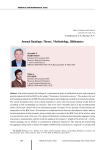
Journal rankings: theory, methodology, bibliometry
Статья научная
The article presents the findings of a scientometric study of publication activity and ranking of journals registered with the RSCI on the subject “Economics. Economic sciences”. The analysis of a new methodology proposed by the RSCI for determining journal rankings has revealed its serious shortcomings. The article formulates three main critical postulates to prove that the journal ranking results derived according to this methodology are incorrect. One of its most vulnerable aspects is the unsubstantiated choice of journals carried out by an anonymous group of experts for the purpose of determining the composition of the RSCI core. The situation is complicated by the fact that this subjective choice leads to the discrimination of other journals, whose citation rate is recorded in the RSCI only if the article is cited in a journal that is part of the core. The choice of bibliometric indicators determining the aggregate rating of journals is unsatisfactory, and first of all this applies to the indicator “length of the article text”, which, strictly speaking, has no relation to scientometric indicators whatsoever. The formula for determining the aggregate rating itself, in which the weights of bibliometric indicators are “adjusted” to comply with a certain expert rating from five years ago, cannot be called justified. The constructive criticism provided in the article is accompanied by a description of an alternative approach with the elimination of the identified shortcomings of the new RSCI methodology. We are talking about a fundamentally different way of allocating the journals core: it does not use subjective assessments of any expert groups; instead, it uses certain formal criteria related to the production of knowledge and its dissemination in the form of publication activity of academic institutes of the Russian Academy of Sciences and leading universities that are founders of economic journals. The article presents a new approach to the methodology for determining a journal rating based on the application of MW analysis (Multiway data analysis), which is a generalization of factor analysis applied to a multidimensional matrix. As a result, we put forward another set of journals included in the core; this ranking is called Yadro.RU; we also propose a more reasonable version for the ranking of journals registered with the RSCI on the subject “Economics. Economic sciences”.
Бесплатно

